
County Cork
Cork is the largest and one of the most diverse county in Ireland. Plains, mountain ranges, cliffs and beaches create the varied landscape of the county Cork. To the east, you encounter the charming harbor towns as Cobh, Youghal or Kinsale, which hides the stories from the times of the first Viking raids by period of growth and prosperity (extensive trade with ports all over Europe in the 18th century) to the times of the great emigration to North America(Cobh was the departure point for 2.5 million Irish people who emigrated between 1848 and 1950). The wildlife enthusiasts shouldn't miss Fota Wildlife Park which is home to many exotic species of mammals(including giraffe, european bison, cheetah...), birds and plants. West Cork is the county's most remote and wild region. Rocky, mountainous Peninsulas are swept into the ocean creating a jagged coastline. Mizen Peninsula with its famous Mizen Head Signal Station (the most south-westerly point of Ireland) is one of the major tourist attraction in country. County Cork contains several notable islands like Bere Island , Sherkin Island or Cape Clear Island which are a paradise for wildlife enthusiasts and water sports lovers. County Cork is not just nature, you'll find also many interesting historic buildings, gardens and museums like Blarney Castle with its magnificent garden or Bantry House – one of the best preserved historic mansions in Ireland. A major attraction to the coastline of Cork is whale watching, with sightings of fin whales, basking sharks, pilot whales, minke whales, and other species being frequent.
Interesting places in county Cork
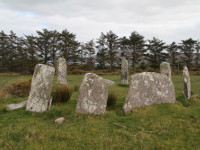
Dereenataggart Stone Circle
Southwest Ireland | County Cork
Derreenataggart Stone Circle is located near Castletownbere, on Beara Peninsula, in west part of county Cork. This well preserved example of a recumbent stone circle has 7.8m in diameter and probably had 15 upright stones of which 9 are still standing, 3 have fallen and 3 are missing. The entrance is marked by pair of tallest stones (the portal stones) and t... more info and photos
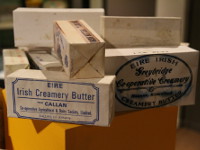
Butter Museum
Southwest Ireland | County Cork
The Butter Museum is located in the historic Shandon area of Cork city, beside the entrance to the old Cork Butter Exchange. It presents the history of the Irish dairy industry from its earliest times, through the heyday in the 19th-century, when Cork was the largest exporter of butter in the world, to the modern times, when the Kerrygold brand has achieved ... more info and photos
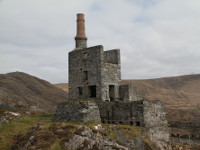
Allihies Copper Mine Museum
Southwest Ireland | County Cork
Allihies Copper Mine Museum is situated in the last village, at the end of Beara Peninsula, in west County Cork. The beautiful scenery surrounding the village of Allihies is dominated by the Mountain Mine and the Man Engine House reminding the mining past of this place. The museum is housed in former Methodist church built in 1845 for the Cornish miners, wor... more info and photos

Cobh Heritage Centre
Southwest Ireland | County Cork
Cobh Heritage Centre is located in restored Victorian Railway Station and presents rich and very interesting history of small fishing village which became important and internationally recognized port. Thanks to perfect natural dispositions, harbour became significant refuelling and assembly point for naval and commercial ships, in the times of Napoleonic Wa... more info and photos
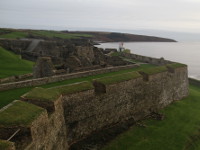
Charles Fort
Southwest Ireland | County Cork
Charles Fort (Irish: Dún Chathail), which overlooking and protecting Kinsale Harbour, is with no doubt one of the most spectacular and worth visiting attraction in County Cork. It was named after King Charles II, during whose reign has been built on the site of an earlier stronghold known as Ringcurran Castle, over the years 1670's and 80's. Roughly at the s... more info and photos
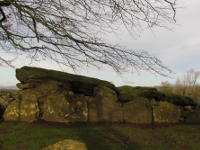
Labbacallee Wedge Tomb
Southwest Ireland | County Cork
Labbacallee Wedge Tomb is located 2 km southeast of Glanworth, County Cork (8 km north-west of Fermoy). Its name comes from Irish words "leaba caillighe", which means "the bed of the hag/witch". The monument dates from the early Bronze Age and it is the largest wedge tomb in Ireland. The gallery is 7.75 m long, divided on two chambers (6.2 m and 0.9 m long)... more info and photos

Cork City Gaol
Southwest Ireland | County Cork
Cork City Gaol located on Sunday's Well is one of most interesting tourist attractions in the city. It was established in 1824 to replace overcrowded old prison at the Northgate Bridge. The building was designed by William Robertson of Kilkenny and built by the Deane family. One of Ireland's greatest sculptors, John Hogan worked there as a drafter. At the be... more info and photos
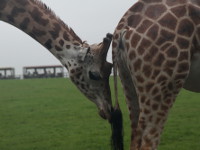
Fota Wildlife Park
Southwest Ireland | County Cork
Fota Wildlife Park is located at the eastern suburbs of Cork City on Fota Island in County Cork. Located on 75-acre (30 ha) park is home to many interesting mammal, bird and plant species represent all of the continents and ecosystems on Earth (some are under threat of extinction). Fota Wildlife Park was established as a joint project of the Zoological Socie... more info and photos
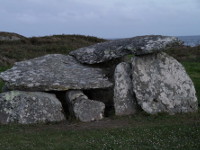
Altar Wedge Tomb
Southwest Ireland | County Cork
Altar Wedge Tomb - built from local slabs, this wedge shaped tomb is one of a dozen in the Mizen peninsula. It was first erected at the end of the Stone Age, around 3,000 to 2,000 BC, with its entrance deliberately lined up with the distant Mizen Peak. Archaeologists recently uncovered some burnt human bone which they radiocarbon dates to about 2,000 BC a... more info and photos

Drombeg Stone Circle and Fulacht Fiadh
Southwest Ireland | County Cork
Drombeg is a fine example of a recumbent stone circle located about 2.5 km east of Glandore, in west County Cork. It has about 9 m in diameter and consists of 17 stones of which 13 are original. The entrance, situated from the north-east side is marked by pair of tallest stones (the portal stones) and together with recumbent stone, which is placed opposite, ... more info and photos
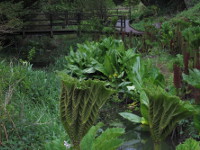
Blarney Castle Gardens
Southwest Ireland | County Cork
Blarney Castle Gardens occupies over 60 acres of sprawling parklands which include gardens, avenues, arboretums and waterways. Hidden behind the Castle battlements, the Poison Garden - educational collection of poisonous plants contains interesting plants from around the world. All the plants here are sign posted with information, about their toxicity, trad... more info and photos
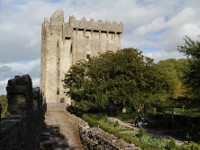
Blarney Castle
Southwest Ireland | County Cork
Blarney Castle originally dates from before 1200, when a wooden structure was believed to have been built on the site, although no evidence remains of this. Around 1210 this was replaced by a stone fortification. It was destroyed in 1446, but subsequently rebuilt by Cormac Laidir MacCarthy, Lord of Muscry. The castle was besieged during the Irish Confederate... more info and photos

Baltimore Castle
Southwest Ireland | County Cork
Baltimore Castle (Dún na Séad) was built in 1215 by an Anglo-Norman Sleynie, a descendant of Robert FitzStephen "The Conquistador" (one of the first Normans who arrived with Richard de Clare - known as "Strongbow", to settle Ireland). In 1261, after the battle of Callan, the Irish clan of O’Driscolls took over the Dún na Séad castle and their former la... more info and photos

Cape Clear
Southwest Ireland | County Cork
Cape Clear Island - known as the Queen of Carbery's Hundred Isles is located 14,5km off Baltimore in west county Cork. The Island has a rich natural and archaeological history and is a renowned birdwatchers paradise (is home to Ireland's only manned bird observatory, which has been maintaining a daily species log since 1959r). It's 4.8km long and 1.6km wide,... more info and photos



















